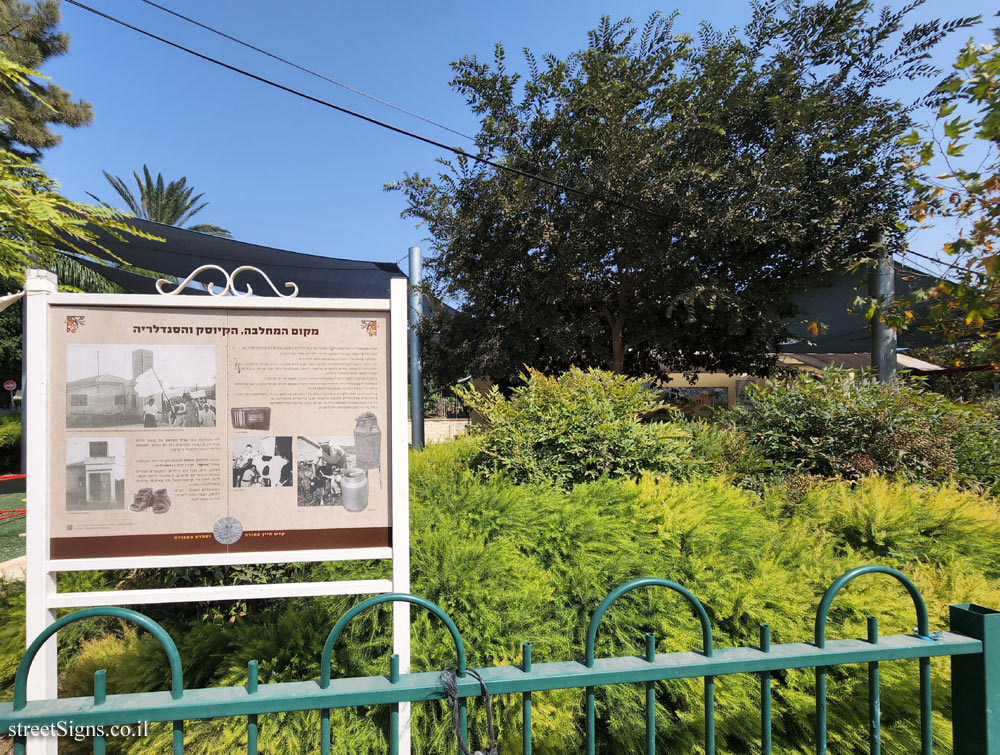The sign is one of a series of signs marking the early days of Kfar Haroeh.
The place was photographed on the same day by the same photographer
 Click for a larger image Translation of the text on the sign
Click for a larger image Translation of the text on the sign:
The place of the dairy, the kiosk and the shoe store The dairy building was located in the northern part of the cold house on the site of today’s playground.
In 1936, when Dutch cows arrived in Israel, the dairy industry was created.
The dairy was managed by the members Menachem Mat and Asher Lizarowitz.
Every morning the members of the moshav brought the jugs of milk they milked in the barns to the dairy on a donkey or by hand. The amount of milk from each farm is measured in liters and recorded. The milk was poured into a large container, cooled, and transported on a horse-drawn cart to the dairy in Hadera.
Over the years, each farm purchased cooling containers for itself and the milk was collected by the Terra company.
A radio was placed in the dairy, the only one in Kfar Haroeh at the time, and the people of the village adjusted the time of bringing the milk jug to the time of the news broadcast on the radio.
In November 1947, in preparation for the UN vote on the establishment of a state for the Jewish people, the people of the village crowded around in excitement. The radio, and when they heard the result, they broke into dancing from the dairy to the synagogue, which opened spontaneously for the occasion. Eliezer Efner opened the consumer and distributed biscuits and wine to the celebrants.
Next to the dairy stood Pinchas Flick’s kiosk hut, where they sold sweets, gazoz and krativs, to the delight of all the children of the village and the students of the yeshiva.
Adjacent to the kiosk, under the dairy’s cooling facility was a "boodka" - a small room belonging to the cobbler’s shop.
in those days. Most children and adults wore high brown shoes with laces, and when the shoe was small for the foot. Cut the front of the shoe, which made it possible to use the shoe for another season.
When the shoes were worn out - they brought them to be repaired, and stood in line for the cobbler, who was usually late to come.
[Photos - from top to bottom and then from right to left]
the radio
to the milk
Milking in the village
Parade on Independence Day, next to the dairy building, above the roof of the building rises the cooling facility of the dairy, below it is the "bodka"
The entrance door to the shoe store
For more photos, movies and stories from the beginning of Kfar Haroeh - you are invited to scan the code and enter - QR code
Consecrate your life to the Torah and devote yourself to work - Kfar Haroeh

 Click for a larger image
Click for a larger image